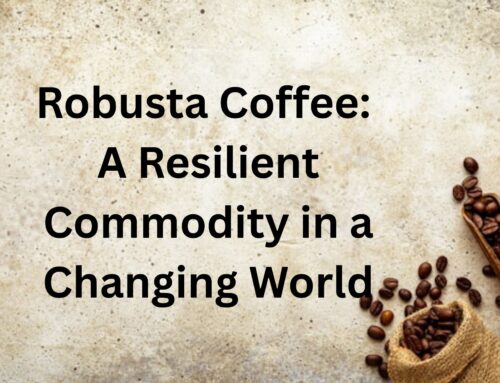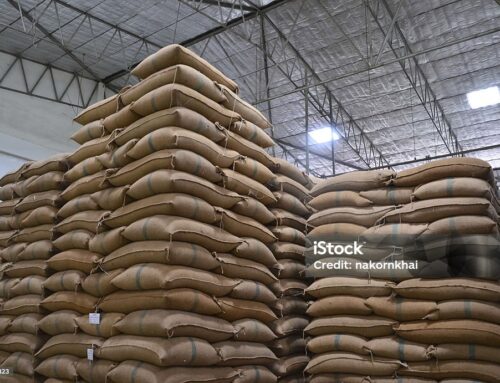
Tea, a simple brew steeped in history and culture, is far more than just a beverage; it’s a global commodity of immense economic and social significance. From its humble origins in ancient China to its widespread consumption across continents, tea has shaped empires, fueled trade routes, and become an integral part of daily life for billions. This blog post delves into the multifaceted world of tea as a commodity, exploring its history, cultivation, market dynamics, and the pressing challenges it faces in the 21st century.
The World of Non-Alcoholic Beverages: Tea’s Prominent Position
The non-alcoholic beverage market is a vast and diverse landscape, encompassing everything from plain water to fruit juices, soft drinks, and specialty concoctions. Within this expansive category, tea holds a unique and prominent position. Unlike sugary sodas or heavily processed drinks, tea is often perceived as a healthier, more natural alternative. Its wide array of flavors, aromas, and perceived health benefits – from antioxidants to calming properties – contribute to its enduring popularity.
Tea’s versatility is also a key factor in its dominance. It can be consumed hot or cold, with or without milk and sugar, and comes in countless varieties, each offering a distinct experience. From the robust black teas of Assam to the delicate green teas of Japan, the floral oolongs of Taiwan, and the earthy pu-erhs of Yunnan, there’s a tea to suit every palate and occasion. This inherent diversity allows tea to cater to a broad consumer base, making it a staple in homes, cafes, and restaurants worldwide.
A Journey Through Time: The History of Tea Farming
The history of tea farming is a rich tapestry woven over millennia, with its roots firmly planted in ancient China. Legend has it that Emperor Shen Nung discovered tea in 2737 BCE when tea leaves accidentally blew into his boiling water. While the exact origins are shrouded in myth, archaeological evidence suggests tea consumption in China dates back thousands of years.
Initially, tea was primarily used for medicinal purposes. Over time, its recreational consumption grew, and by the Tang Dynasty (618-907 CE), tea drinking had become an art form, deeply integrated into Chinese culture. Tea cultivation began in earnest in mountainous regions, where the climate and soil conditions were ideal. Early farming methods were labor-intensive, relying on manual picking and processing.
From China, tea spread to other parts of Asia. Japan, for instance, received tea seeds and cultivation knowledge from Buddhist monks in the 9th century, leading to the development of unique Japanese tea traditions like matcha. Later, in the 17th and 18th centuries, the British East India Company played a pivotal role in introducing tea to the Western world. Realizing the immense profit potential, the British began cultivating tea on a large scale in their colonial territories, particularly in India (Assam and Darjeeling) and Ceylon (Sri Lanka), in the 19th century. This marked a significant shift in tea production, moving it beyond its traditional Chinese homeland and establishing it as a global commodity.
Today, tea farming is a highly specialised agricultural practice. Modern tea plantations employ a combination of traditional techniques and scientific advancements to maximise yield and quality. The process involves meticulous care, from nurturing young tea bushes to precise plucking, with skilled workers often hand-picking the tender leaves and buds to ensure the finest quality.
Global Tea Harvesters: A Geographical Overview
Tea is cultivated in numerous countries around the world, primarily within the “Tea Belt” – a region spanning between the Tropic of Cancer and the Tropic of Capricorn, characterised by warm temperatures, high humidity, and ample rainfall. The major tea-producing countries include:
- China: Remains the world’s largest producer of tea, cultivating a vast array of tea types, including green, black, oolong, white, yellow, and dark teas.
- India: A close second, renowned for its strong black teas like Assam and Darjeeling, as well as Nilgiri teas from the south.
- Kenya: The largest producer of tea in Africa and a significant exporter of black tea.
- Sri Lanka (Ceylon): Famous for its distinctive Ceylon black teas, produced across various elevations.
- Vietnam: A growing producer of black and green teas.
- Turkey: Primarily produces black tea for domestic consumption, particularly along the Black Sea coast.
- Indonesia: Known for both black and green teas.
- Japan: Specializes in green teas, including sencha, matcha, and gyokuro.
- Argentina: A significant producer of black tea, largely for export.
- Malawi: An important tea producer in Africa.
- Uganda: Another notable African tea producer.
- Bangladesh: Produces tea primarily for domestic consumption.
Risks and Vulnerabilities: Challenges for Tea Farms
Tea farms, despite their lush appearance, are susceptible to a range of risks that can significantly impact yield, quality, and profitability. These challenges include:
- Pests and Diseases: Tea plants are vulnerable to numerous pests, including tea mosquitoes, aphids, mites, and various types of caterpillars. Diseases such as blister blight, red rust, and anthracnose can also cause widespread damage to tea bushes, affecting leaf quality and overall plant health. Farmers often rely on integrated pest management (IPM) strategies, combining biological, cultural, and chemical controls to mitigate these threats.
- Climate Variability and Extreme Weather Events: Tea cultivation is highly dependent on consistent rainfall and specific temperature ranges. Droughts can stunt growth and reduce yields, while excessive rainfall can lead to waterlogging, root rot, and increased susceptibility to fungal diseases. Extreme weather events like hailstorms can severely damage tender tea leaves, rendering them unmarketable. Frost is particularly damaging to tea bushes, especially in higher altitude regions.
- Soil Degradation: Continuous cultivation without proper soil management can lead to nutrient depletion, soil erosion, and acidification, all of which negatively impact tea plant health and productivity.
- Labor Shortages and Rising Costs: Tea farming is labour-intensive, especially for the hand-plucking of high-quality teas. Many tea-producing regions face challenges with an aging workforce and young people opting for less arduous employment, leading to labor shortages and increasing wage costs.
- Market Price Volatility: Tea prices on the global market can fluctuate significantly due to supply and demand imbalances, geopolitical events, and currency exchange rates. This volatility makes it difficult for farmers to plan and invest.
- Climate Change: A pervasive and increasingly critical threat, climate change exacerbates many of the aforementioned risks. Rising temperatures, altered rainfall patterns, and increased frequency of extreme weather events pose long-term challenges to the sustainability of tea farming.
The Ideal Terroir: Soil Requirements for Tea
The quality of tea is inextricably linked to its “terroir” – the unique combination of environmental factors, including soil, climate, and topography. For optimal growth, tea plants (Camellia sinensis) thrive in specific soil conditions:
- Acidic Soil (pH 4.5-5.5): Tea plants are acid-loving plants and prefer well-drained, acidic soil. Alkaline soils can hinder nutrient uptake and lead to deficiencies.
- Well-Drained Loamy Soil: Good drainage is crucial to prevent waterlogging, which can lead to root rot. Loamy soil, a mix of sand, silt, and clay, provides good drainage while retaining sufficient moisture and nutrients.
- Rich in Organic Matter: Organic matter improves soil structure, water retention, and nutrient availability, all of which are vital for healthy tea plant growth.
- Deep Soil: Tea plants develop deep root systems, so deep soil allows for better anchorage and access to water and nutrients.
- Sloping Land (often preferred): Many prime tea-growing regions are on hillsides or mountain slopes. This provides excellent natural drainage and can expose the plants to more sunlight.
Global Tea Consumption: Who Drinks the Most?
While production is concentrated in a few key countries, tea consumption is truly global. However, consumption patterns vary significantly. Measuring consumption can be done by per capita intake or total volume.
By per capita consumption, some of the leading tea-drinking nations include:
- Turkey: Consumes an astounding amount of tea per person, deeply ingrained in their culture.
- Ireland: Known for its strong black tea consumption.
- United Kingdom: Tea is a national beverage, with a long-standing tradition.
- Russia: A large consumer of black tea.
- Morocco: Mint tea is a central part of their social customs.
- China: While a massive producer, per capita consumption is also high, given its vast population.
- India: Another large producer with a very high domestic consumption.
In terms of total volume consumed, given their enormous populations, China and India are by far the largest tea consumers globally. Other major markets by volume include Russia, the UK, Japan, and the United States.
The Global Tea Trade: Importers and Exporters
The tea trade is a significant component of global agriculture and commerce.
Biggest Exporters of Tea (by volume):
- Kenya: Consistently one of the largest exporters, primarily of black tea.
- China: Exports a wide variety of teas, including green, black, and specialty teas.
- Sri Lanka: A major exporter of Ceylon black tea.
- India: Exports significant quantities of black tea, though a large portion of its production is for domestic consumption.
- Vietnam: A growing exporter of black and green teas.
- Argentina: A significant exporter of black tea, especially to the US market.
Biggest Importers of Tea (by volume):
- Pakistan: A massive importer of tea, primarily for domestic consumption.
- Russia: Imports substantial quantities of black tea.
- United States: A diverse market importing various tea types.
- United Kingdom: Despite its tea-drinking culture, the UK imports most of its tea.
- Iran: A large importer of black tea.
- Egypt: Significant importer of tea for its domestic market.
Tea as a Traded Commodity: Exchanges and Mechanisms
Tea is traded as an agricultural commodity on various platforms and through different mechanisms:
- Auction Centers: A primary method of tea trading, particularly for bulk teas. Major tea auction centers exist in producing countries like Mombasa (Kenya), Colombo (Sri Lanka), Kolkata and Guwahati (India), and Jakarta (Indonesia). Buyers from around the world bid for tea lots, and prices are determined by supply and demand.
- Private Sales/Direct Sourcing: Many specialty tea companies and larger buyers engage in direct sourcing from tea estates, establishing long-term relationships and often paying premium prices for high-quality or ethically produced teas.
- Forward Contracts and Futures Markets (Limited): While not as prominent as for other major commodities like oil or grains, there are limited instances of forward contracts for tea, allowing buyers and sellers to agree on prices for future delivery. Dedicated tea futures exchanges are less common, but some general agricultural commodity exchanges might offer tea contracts or related derivatives.
- Over-the-Counter (OTC) Trading: Private negotiations between buyers and sellers, often for smaller volumes or specific tea grades.
- Online Platforms: The rise of e-commerce has led to the emergence of online B2B platforms for tea trading, connecting buyers and sellers directly.
The Price History of Tea: A Rollercoaster Ride
The price of tea as a commodity has experienced significant fluctuations over time, influenced by a multitude of factors:
- Supply and Demand: The fundamental drivers. Bumper harvests can lead to lower prices, while droughts or pests can reduce supply and push prices up. Growing consumer demand in emerging markets can also put upward pressure on prices.
- Weather Events: As discussed, adverse weather in major producing regions can severely impact supply and cause price spikes.
- Economic Conditions: Global economic downturns can reduce consumer spending on discretionary items like specialty teas, affecting demand. Conversely, economic growth can boost consumption.
- Geopolitical Factors: Trade disputes, political instability in producing regions, and changes in trade policies can disrupt supply chains and influence prices.
- Currency Exchange Rates: As an internationally traded commodity, tea prices are also affected by fluctuations in currency exchange rates.
- Quality and Type of Tea: Specialty teas (e.g., Darjeeling first flush, high-grade Japanese greens) command much higher prices than generic or lower-grade bulk teas.
- Competition from Other Beverages: The rise of coffee and other non-alcoholic beverages can influence demand for tea.
Historically, tea prices have seen periods of stability followed by sharp increases or decreases. For instance, severe droughts in major tea-producing regions or disruptions in shipping can lead to significant price spikes. Conversely, oversupply or reduced demand can depress prices, impacting farmer livelihoods. Analyzing specific price trends requires looking at data for different tea types and regions, as the “price of tea” is not a single, monolithic figure. Generally, global tea prices have shown an upward trend over the long term, driven by increasing global demand, but with considerable short-term volatility.
Global Warming’s Grip: Environmental Impact on Tea
Global warming poses an existential threat to tea cultivation, impacting every aspect of the tea ecosystem:
- Altered Rainfall Patterns: Climate change is leading to more erratic rainfall, with longer dry spells and more intense downpours. Both extremes are detrimental to tea plants, causing drought stress or waterlogging and root rot.
- Rising Temperatures: Tea plants thrive within specific temperature ranges. Higher temperatures can accelerate growth in some instances but also lead to heat stress, reduced photosynthesis, and changes in the chemical composition of tea leaves, affecting flavor and aroma. Pests and diseases also proliferate faster in warmer conditions.
- Increased Frequency of Extreme Weather Events: More frequent and severe hailstorms, frosts (in some areas), and floods can devastate tea gardens, causing significant crop losses and long-term damage to plants.
- Changes in Terroir: Over time, changes in temperature and rainfall can subtly alter the unique “terroir” of specific tea-growing regions, potentially impacting the distinctive characteristics of renowned teas.
- Impact on Biodiversity: Changes in climate can affect the delicate balance of ecosystems within tea gardens, impacting beneficial insects and soil microbes crucial for plant health.
Mitigating Climate Change: Sustainable Practices for Tea Farmers
Tea farmers are at the forefront of climate change impacts and are increasingly adopting sustainable practices to build resilience and mitigate environmental damage:
- Agroforestry and Shade Management: Planting shade trees within tea gardens can regulate temperature, reduce water evaporation, improve soil health, and provide habitat for beneficial insects. This mimics natural forest ecosystems.
- Water Conservation Techniques: Implementing drip irrigation, rainwater harvesting, and mulching helps conserve precious water resources, especially during dry spells.
- Soil Health Management: Practices like composting, cover cropping, minimum tillage, and the use of organic fertilizers enhance soil fertility, improve water retention, and sequester carbon, making soils more resilient to climate extremes.
- Integrated Pest Management (IPM): Reducing reliance on chemical pesticides by promoting natural predators, using resistant tea varieties, and implementing cultural controls helps maintain biodiversity and reduce the environmental footprint.
- Diversification: Some farmers are exploring intercropping with other climate-resilient crops or diversifying their tea varieties to adapt to changing conditions.
- Early Warning Systems: Utilizing climate data and weather forecasts to anticipate and prepare for extreme weather events.
- Research and Development: Investing in research to develop climate-resilient tea varieties and improved farming techniques.
- Certification and Sustainable Standards: Adhering to standards like Rainforest Alliance, Fair Trade, or organic certification often encourages and verifies sustainable farming practices.
- Renewable Energy: Shifting towards renewable energy sources for processing facilities to reduce carbon emissions.
The Coffee Conundrum: How New Age Coffee Affects Tea Trends
The rise of the “new age of coffee consumption,” characterized by specialty coffee, artisanal brewing methods, and a strong emphasis on origin and ethical sourcing, has undoubtedly influenced tea consumption trends, both positively and negatively:
- Increased Competition: Specialty coffee shops and brands have created a powerful consumption culture, attracting consumers who might otherwise opt for tea. The emphasis on unique flavors, brewing rituals, and a “third place” experience has been particularly successful.
- Inspiration for Speciality Tea: The success of specialty coffee has pushed the tea industry to elevate its own offerings. This has led to a greater focus on single-origin teas, artisanal blends, unique brewing methods (e.g., gongfu cha), and a more sophisticated tea-drinking experience.
- Demand for Transparency and Ethics: The coffee industry’s focus on direct trade, fair wages, and sustainable practices has set a benchmark for the tea industry. Consumers are increasingly demanding similar transparency and ethical sourcing for their tea.
- Innovation in Ready-to-Drink (RTD) Beverages: The success of RTD coffee products has spurred innovation in the RTD tea market, with a wider range of iced teas, kombuchas, and other convenient tea-based beverages catering to on-the-go consumers.
- Cross-Pollination of Consumers: While there’s competition, there’s also cross-pollination. Coffee drinkers, exposed to the world of specialty beverages, might be more open to exploring the nuances of specialty teas. Cafes often offer both, broadening consumer choice.
- Health and Wellness Trend: Tea benefits from the broader health and wellness trend, as it is often perceived as a healthier alternative to coffee, especially for those sensitive to caffeine or seeking natural antioxidants.
Overall, the new age of coffee consumption has forced the tea industry to innovate, diversify, and emphasize quality, origin, and sustainability to remain competitive and attract a new generation of discerning consumers.
Regional and Cultural Nuances: Consumer Preferences in Tea
Consumer preferences for tea vary significantly across different regions and cultures, reflecting historical influences, climatic conditions, and evolving tastes:
- Asia:
- China: A vast market with diverse preferences. Green tea is traditionally dominant, especially in the north, while black tea (hongcha), oolong, pu-erh, and white tea are also widely consumed. Brewing methods like gongfu cha are popular.
- India: Strong, robust black teas (Assam, Darjeeling, Nilgiri) are preferred, often consumed with milk and sugar (chai). Masala chai, with its blend of spices, is a cultural staple.
- Japan: Almost exclusively consumes green tea, with specific preferences for sencha (most common), matcha (ceremonial), gyokuro, and hojicha. Emphasis on purity, freshness, and precise brewing.
- Sri Lanka: Black tea is the norm, known as Ceylon tea, consumed plain or with milk.
- Southeast Asia: Iced tea (Thai iced tea), sweetened and often with condensed milk, is popular in warmer climates. Herbal teas are also common.
- Europe:
- United Kingdom & Ireland: Strong black teas, often consumed with milk and sugar, are deeply embedded in daily rituals (e.g., “elevenses,” afternoon tea).
- Russia: Black tea is dominant, often consumed from a samovar, sometimes with lemon or jam.
- Turkey: Strong black tea, brewed in a double teapot, is consumed throughout the day in small tulip-shaped glasses.
- Germany & France: Growing interest in specialty teas, particularly green, herbal, and fruit infusions.
- Middle East & North Africa:
- Morocco: Mint tea is a ceremonial and social drink, often prepared with green tea, fresh mint, and plenty of sugar.
- Egypt & Sudan: Black tea is common, often served sweet.
- Americas:
- United States: Historically a coffee-drinking nation, but tea consumption is growing, with increasing interest in green tea, herbal infusions, and specialty black teas. Iced tea is widely popular, especially in the South.
- South America (e.g., Argentina): While yerba mate is popular, black tea consumption is also significant, particularly for export-oriented production.
These preferences are influenced by cultural heritage, climate (hot climates often favor iced tea), health trends, and marketing efforts by tea companies. The globalized world is also leading to some convergence of preferences, with consumers in traditional black tea markets exploring green and herbal teas, and vice-versa.
Policy Measures to Support Tea Farmers Facing Climate Challenges
Addressing climate-related challenges for tea farmers requires a multi-pronged approach involving policy interventions at local, national, and international levels:
- Research and Development Funding: Governments and international organizations should invest in research for climate-resilient tea varieties, drought-resistant clones, and innovative farming techniques adapted to changing climate conditions.
- Financial Support and Insurance Schemes: Providing subsidies for adopting sustainable practices, offering low-interest loans for climate-adaptive infrastructure (e.g., irrigation systems), and developing crop insurance schemes specifically designed for climate risks (drought, flood, hail) can protect farmers from income losses.
- Extension Services and Training: Strengthening agricultural extension services to provide farmers with knowledge and training on climate-smart agriculture practices, pest and disease management, and soil health improvement.
- Water Resource Management Policies: Implementing policies that promote efficient water use, rainwater harvesting, and sustainable management of water bodies in tea-growing regions.
- Carbon Sequestration Incentives: Policies that reward tea farmers for adopting practices that sequester carbon in their soils and biomass (e.g., agroforestry) can provide additional income streams and encourage sustainable land use.
- Market Access and Fair Pricing Mechanisms: Policies that promote fair trade, ensure stable and remunerative prices for tea farmers, and provide market access for sustainably produced teas can incentivize climate-friendly practices.
- International Cooperation and Climate Funds: Facilitating access to international climate finance and fostering cross-border collaboration on research, knowledge sharing, and adaptive strategies for tea-producing nations.
- Land Tenure Security: Ensuring secure land tenure for tea farmers can encourage long-term investments in sustainable land management and climate resilience.
- Infrastructure Development: Investing in infrastructure that can withstand extreme weather events, such as improved drainage systems and resilient processing facilities.
By implementing these comprehensive policy measures, governments and stakeholders can create an enabling environment that supports tea farmers in adapting to and mitigating the impacts of climate change, ensuring the long-term sustainability of this vital global commodity.
Conclusion: A Brew for the Future
Tea, a beverage steeped in history and culture, stands at a critical juncture. As a global commodity, it faces the twin challenges of a dynamic market and the profound impacts of climate change. From the meticulous cultivation practices in distant mountains to the complex web of international trade, tea’s journey to our cups is an intricate one. The future of tea hinges on the collective efforts of farmers, consumers, industry players, and policymakers. By embracing sustainable farming methods, fostering fair trade practices, and adapting to the realities of a changing climate, we can ensure that tea continues to be a cherished and economically vital commodity for generations to come – a comforting brew for a sustainable future.




